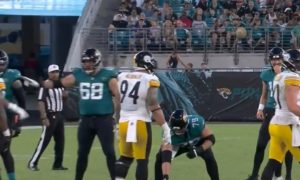Over the course of the past couple of years, the Pittsburgh Steelers have undergone an uncommon amount of change, which could have been largely correlated with the fact that the team had finished 8-8 in consecutive seasons while failing to advance to the postseason.
In deference to general manager Kevin Colbert, the attitude used to approach the offseason in those years was that this was an 8-8 team and these were 8-8 players. It’s little surprise that a lot of things changed during those years.
But the Steelers are now coming off a season in which they finished with a record of 11-5, going 8-2 down the stretch and winning their last four games to claim their first AFC North title since the 2010 season. Correspondingly, we’ve seen a great deal less change.
Personnel changes may have been few, but they were often significant, including the retirements of three starters. But this offseason also saw the release of yet another longtime stalwart and a building block of the team’s defensive success through much of the past decade.
Veteran defensive end Brett Keisel was released this offseason after he finished the 2014 season on injured reserve after suffering a biceps tear. We have seen the way that similar injuries in older players tend to repeat themselves year after year, so it’s no surprise that this spelled the end of his playing career.
It seemed nearly over through much of the previous offseason as well, as he spent most of the summer sitting on his couch with the Steelers seemingly ready to move on, only to swoop in as Keisel briefly flirted with the idea of going to Arizona.
Keisel was inked to a modest two-year deal, but whether or not he would ever see that second year was always in question. His injury cemented that fact, as he to this day would not be ready to play, and may even have a longer road ahead for full recovery.
There is no doubting the historic import that Keisel had on the club’s modern run, however, as he and Aaron Smith came to define what a 3-4 defensive end was in this system. He was the embodiment of so much of what the team values in its players, both on and off the field, which is why he is and will remain a fixture long after his retirement, whenever that might come formally.
Though he was not a starter for the length of his career, he was always a contributor, and his blue collar mindset served him well when he did finally crack the lineup. Long a locker room favorite in part because of that, he once had his quarterback lobby for his return.
Late in his career, there was even a brief period in which he was recognized as a Pro Bowler thanks to his pass rushing and his ability to get his hands on a number of passes at the line. But most importantly, he has used his years of experience in order to mentor the next generation that is now in place.








